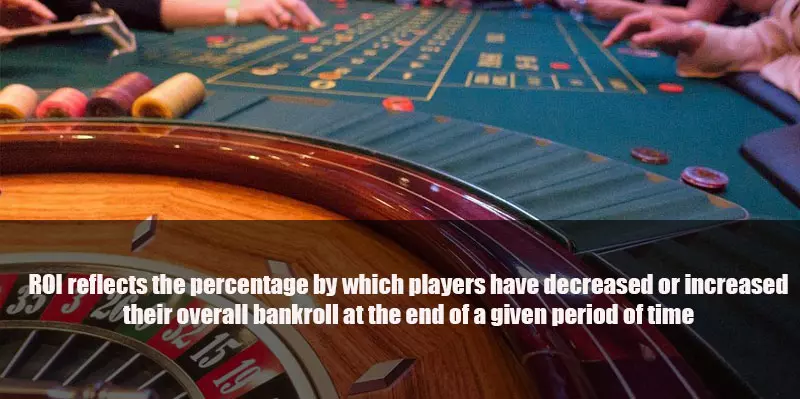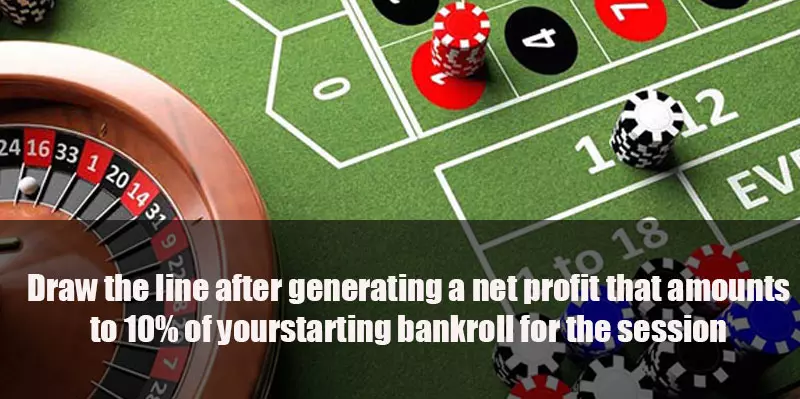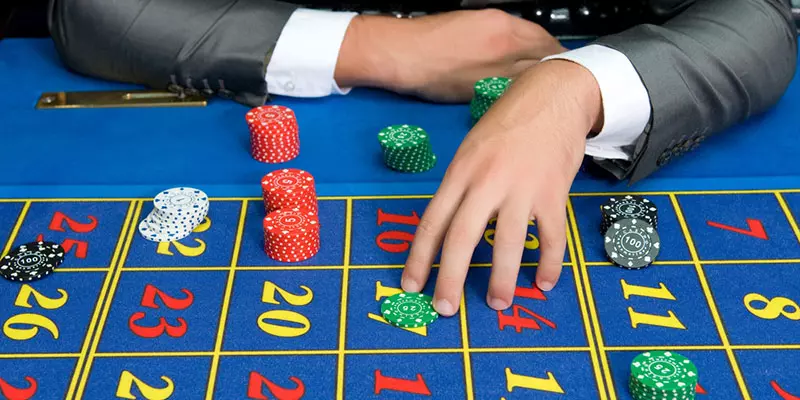Thanks to the rapid technological progress in the past two decades, casino players are no longer required to visit brick-and-mortar gambling venues in order to enjoy their favourite games. No matter what their preferences for games are, casino enthusiasts will be spoiled for choice because of the opulence of titles they can access without any hassle through their smartphone or their computer.
Roulette is no different either as lovers of the table game might be struggling to pick a variant to enjoy. This is to be expected as software developers give their best to come up with roulette variants that outclass the ones introduced by their rivals.
Furthermore, fans of this game of chance are able to place their bets from the comfort of their surroundings as all reputable online casino operators have added authentic roulette variations to their gaming catalogues.
However, if you are new to the game, it would be best if you become well acquainted not only with its rules, but with other key details that are not that salient such as the return on investment (ROI) in roulette as well as with the average return to player percentage (RTP) the specific variation offers.
Return on Investment in Roulette
Although with the better part of the casino games, practice makes perfect, this does not apply to the game of roulette because it does not matter how sound your knowledge of the game is, your chances of winning will invariably be the same, and you can rely only on luck to win.
Of course, so as to pick up their performance, gambling aficionados should have a proper understanding of the different bet types, their odds of winning, and the payoffs they can potentially collect.
The Return on Investment or ROI is an essential component, which roulette players need to consider prior to joining the game since it also has to do with their bankroll management. Generally speaking, ROI reflects the percentage by which players have decreased or increased their overall bankroll at the end of a given period of time.
In other words, the ROI will represent the total amount roulette mavens have gambled away or have won when the budget they have dedicated to that betting session is concerned. Therefore, this value will be employed so as to indicate what amount avid casino fans should anticipate collecting in exchange for the total staked amount.

In practice, the Return on Investment helps roulette mavens appraise the profit they have managed to accumulate during their betting session, and on most occasions, its value is expressed through percentages.
Calculating the ROI for your roulette betting session is exceptionally straightforward as you just need to divide the return you have got by the total amount you have staked during the specific betting session. Once you get the figures, you need to multiply them by 100 so as to convert them into percentages.
For example, if you have joined the game with an initial bankroll of £200 and have succeeded in generating a net profit of £40 at the end of the betting session, this would mean your ROI is equal to 20% or the percentage by which you have increased your initial bankroll. As you can see, in this case, your ROI is positive.
What these figures dictate is that for every £1 gambling enthusiasts put on the line, the return they should expect to collect will be 20% or just 20 pence.
On bad days, players’ Return on Investment may be the negative. For example, if you start out with an initial bankroll of £100 and you end up with £30, your ROI will be -70. This is how the calculation goes – (£30 – £100) / £100 = – 0.7 x 100 = – 70%. A negative ROI should serve as an indicator to adjust the value of your betting units for the next betting session. Keeping track of your ROI is essential as it will help you determine whether you should invest more or less money during your next betting session.
Roulette experts recommend less experienced players to limit their final Return on Investment to 15% or 20% of their initial bankroll.
What roulette lovers should be mindful of is that in order to work out if the ROI is good or not, they should pay closer attention to the time span they have factored in. What this means is that the above-mentioned values will diminish dramatically in the event that gambling enthusiasts take into consideration hundreds of bets.
The Expected Value of Roulette Wagers
The expected value also has a key role when gambling is concerned because it is used in order to describe the average repetition of something over a lengthier period of time, which is the reason why it is often referred to merely as expectation.
Something that should be kept in mind about the expected value is that it is not employed so as to signify what amount avid casino fans can potentially snatch or lose after they have placed a specific wager.
So as to figure out what the expected value or average expectation as it is also known is, the components casino enthusiasts need to take into account include the payoffs the specific wager type provides, together with the odds of winning.
Something we should make clear is that the amount roulette lovers should look forward to winning or might lose will be expressed using percentages, and as we mentioned already, it has a relation to the wagered amount within the preferred timeframes.

One more thing that is worth mentioning is that by a prolonged period of time, we mean that thousands of spins of the roulette wheel need to take place. This is so because the larger number of trials are encompassed, the more likely it becomes to predict the expected value accurately.
As roulette mavens might expect, the theoretical prediction of the results cannot be errorless for the simple reason that the actual results might often deviate from what was initially anticipated.
As likely as not, you are already cognizant of the fact that depending on the roulette variant you have chosen to revel in, the house edge will be either 2.7% or 5.26%. In some cases, the house advantage comes to 1.36%, but this is only possible, given that either the En Prison or La Partage rule is applied.
We should not forget to mention that the least favourable wager type roulette players can opt for is the Basket bet. It is available exclusively in American-style roulette variants, and the reason why it should be avoided is that it guarantees the house an edge of 7.9%.
As you may or may not know, the house advantage in all casino games, including roulette, and the expected value are equal in size. The only dissimilarity between them stems from the fact that the expected value has a negative sign before it.
In order to estimate the expected value of the different types of bets that can be laid while wagering on roulette, players need to take into account their chance of winning and losing, the amount they are about to put on a stake, and their potential profit.
This is how the equation looks like: (probability to win x profit) – (probability to lose x staked amount) / staked amount. As you can see, no matter if you are more daring in terms of the staked amounts or you are rather risk-averse, the expected value will invariably be a fraction of your stakes.
For the sake of simplicity, we will presume that the amount you wish to put on a stake is just one betting unit. When this is the case, players will be able to estimate the expected value using the following formula: probability to win x profit – the probability to lose.
Now let’s provide an example in order to make sure that things will fall into place. As you might already know, Dozen bets in roulette cover 12 numbers, which therefore means that the probability of scoring a win will be 12/37 when Europan-style roulette games are concerned. When the probability of losing is concerned, it will be 25/37 simply because there are 25 numbers the appearance of which will cause you to lose the staked amount.
So, the expected value of Dozen bets in roulette should be estimated in the following way: (12/37) x 2 – (25/37). Thus, we will get -2.70%, which means that when gambling aficionados spend more time at the roulette table and consistently opt for Dozen bets, they should be prepared to part with about 2.70% of the money they will wager.
Return to Player Percentage in Roulette
The term Return to Player or RTP is used to describe the game’s theoretical payout percentage or how much of the money you have wagered will be paid back over time. For instance, if a given game has an RTP of 95%, this would mean that players can expect to receive £95 back in winnings out of every £100 they put at stake. The higher RTP the game has, the longer your bankroll will last, or at least theoretically.

In order to figure out what the RTP of the roulette variant they are about to start playing is, gambling enthusiasts will be required to take out the value of the house edge from 100%. Still, players should bear in mind that they can estimate the RTP of casino games in the above-mentioned way only if the usage of betting strategies is of little use when it comes to decreasing the house edge. This is precisely the case with games the likes of roulette, war, and craps.
If we presume that you have chosen to consistently opt for Straight bets of £1 on 5, and the chosen roulette variant follows the American rules, this will mean that the edge of the house will stand at 5.26%, while the RTP of the game will be roughly 94.74%. As long as you have decided to place a total of 1,000,000 such wagers, this will mean that in theory, you should be paid back £947,400.
In roulette, wagers that are placed on individual numbers do not turn out to be winners that frequently as the chances of this to come about are only 1 in 38, this should come to explain why the theoretical and the actual wins of gambling enthusiasts do not coincide.
Betting on the Action Numbers
Roulette Money Management
Gambling Discipline
ROI and Return to Player
Best Casinos to Play Roulette
What this means is that the more infrequent a particular event is, which is the case with the occurrence of individual numbers, the more time players will need to spend betting on it before they see their actual and theoretical wins to converge.
Yet, with games where no strategy can help you enhance your chances of winning and the hit frequency is in the upper end of the spectrum, the actual and theoretical RTP will be nearly the same.
When casino games where strategies can be applied are concerned, gambling enthusiasts will be prone to make mistakes from time to time, which is the reason why the casino advantage will be slightly less than 100%.
However, players need to take two things into consideration. First of all, no matter how accurate the RTP of a given roulette variation is, it represents the average return of many spins over prolonged periods of time. If your betting session is quite short, your actual RTP can differ significantly from the statistics published by your online casino operator. For example, the house edge in European roulette stands at 2.70% but this does not necessarily mean you will win back £97.30 on every £100 you bet. You can reach the theoretical player return only over the course of hundreds of spins.

Therefore, the more spins of the wheel take place, the more accurate the information of the actual return of the roulette variant will become.
Another thing to consider is that the RTP does not function as an indicator of how often you will win at roulette (or any other game). The RTP published by a given online casino is the same for all types of bets you can place in roulette. But if a player places only even-money bets like Red/Black or Odd/Even, they will surely collect payouts more often in comparison to a player, who bets on single numbers.
Something essential roulette mavens need to know about the RTP of the games and the house edge is that they are closely tied, and are often described as the two sides of the same coin. Ideally, a roulette variant with an RTP of 100% will mean that the house will be prevented from having the upper hand over players. It goes without saying that there are no casino games in which the scales are not tipped in favour of the house.
So, in simple terms, the house edge is designed so as to guarantee that the house will invariably be the winner.
Most proper web-based casinos tend to release reports about the RTP of the games they offer, so if you want to check out the performance of the chosen roulette variant before you get down to betting on it, this can be the way to go.
Return to Player in American Roulette
Having taken the above factors into consideration, we can proceed to explain what is the average Return to Player in American roulette and how it is calculated. As we noted already, the average return to player is closely related to the house edge for the game.
According to the rules of American roulette, the player loses whenever the ball lands in a zero pocket. But since there is an additional, double-zero pocket on American wheels, the house edge for this variation is higher and stands at 5.26%. From this, it follows that on average, the house gets to keep £5.26 for every £100 wager you make on American roulette. The RTP can be expressed in the following way: 100 – 5.26 = 94.74. So, the average player return in American roulette is equal to 94.74%.
| American Roulette House Edge and Return to Player | ||||
|---|---|---|---|---|
| Bet Type | Bet Payout | Bet Probability | House Edge | Return to Player |
| Straight | 35/1 | 2.63% | 5.26% | 94.74% |
| Split | 17/1 | 5.26% | 5.26% | 94.74% |
| Street | 11/1 | 7.89% | 5.26% | 94.74% |
| Square or Corner | 8/1 | 10.53% | 5.26% | 94.74% |
| Five Line | 6/1 | 13.16% | 7.89% | 92.11% |
| Six Line | 5/1 | 15.79% | 5.26% | 94.74% |
| Column | 2/1 | 31.58% | 5.26% | 94.74% |
| Dozen | 2/1 | 31.58% | 5.26% | 94.74% |
| Red / Black | 1/1 | 46.37% | 5.26% | 94.74% |
| Odd / Even | 1/1 | 46.37% | 5.26% | 94.74% |
| High / Low | 1/1 | 46.37% | 5.26% | 94.74% |
Return to Player in European Roulette
As we know, the wheel in European roulette contains only one zero pocket, which cuts the house edge almost in half, to 2.70%. To calculate the RTP for this variation of the game, we simply need to subtract the house edge from 100. Thus, we will get a theoretical return to player of 97.30%. This means that for every £100 you wager on European roulette, you can potentially get £97.30 back.
| European Roulette House Edge and Return to Player | ||||
|---|---|---|---|---|
| Bet Type | Bet Payout | Bet Probability | House Edge | Return to Player |
| Straight | 35/1 | 2.70% | 2.70% | 97.30% |
| Split | 17/1 | 5.41% | 2.70% | 97.30% |
| Street | 11/1 | 8.11% | 2.70% | 97.30% |
| Square or Corner | 8/1 | 10.81% | 2.70% | 97.30% |
| Six Line | 5/1 | 16.2% | 2.70% | 97.30% |
| Column | 2/1 | 32.4% | 2.70% | 97.30% |
| Dozen | 2/1 | 32.4% | 2.70% | 97.30% |
| Red / Black | 1/1 | 48.64% | 2.70% | 97.30% |
| Odd / Even | 1/1 | 48.64% | 2.70% | 97.30% |
| High / Low | 1/1 | 48.64% | 2.70% | 97.30% |
| French Roulette House Edge and Return to Player * | ||||
|---|---|---|---|---|
| Bet Type | Bet Payout | Bet Probability | House Edge | Return to Player |
| Straight | 35/1 | 2.70% | 2.70% | 97.30% |
| Split | 17/1 | 5.41% | 2.70% | 97.30% |
| Street | 11/1 | 8.11% | 2.70% | 97.30% |
| Trio (0,1,2 / 0,2,3) | 11/1 | 8.11% | 2.70% | 97.30% |
| Four-Number (0,1,2,3) | 8/1 | 10.81% | 2.70% | 97.30% |
| Square or Corner | 8/1 | 10.81% | 2.70% | 97.30% |
| Six Line | 5/1 | 16.2% | 2.70% | 97.30% |
| Column | 2/1 | 32.4% | 2.70% | 97.30% |
| Dozen (P12, M12, D12) | 2/1 | 32.4% | 2.70% | 97.30% |
| Red / Black | 1/1 | 48.64% | 2.70% | 97.30% |
| Impair (Odd) / Pair (Even) | 1/1 | 48.64% | 2.70% | 97.30% |
| Manque (Low) / Passe (High) | 1/1 | 48.64% | 2.70% | 97.30% |
* French roulette is also played on a single-zero wheel, but due to the La Partage rule, players get to keep half of their wagers whenever the ball lands in the zero pocket. This further reduces the built-in house advantage to 1.35%, which means that the theoretical RTP in French roulette is equal to 98.65%. This is way above the return the American variation of the game can offer.